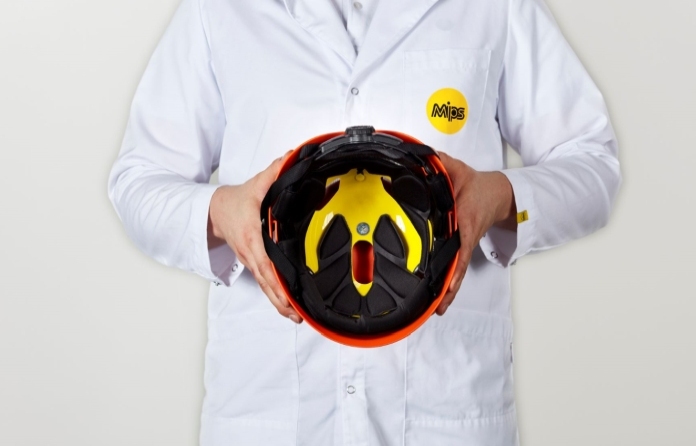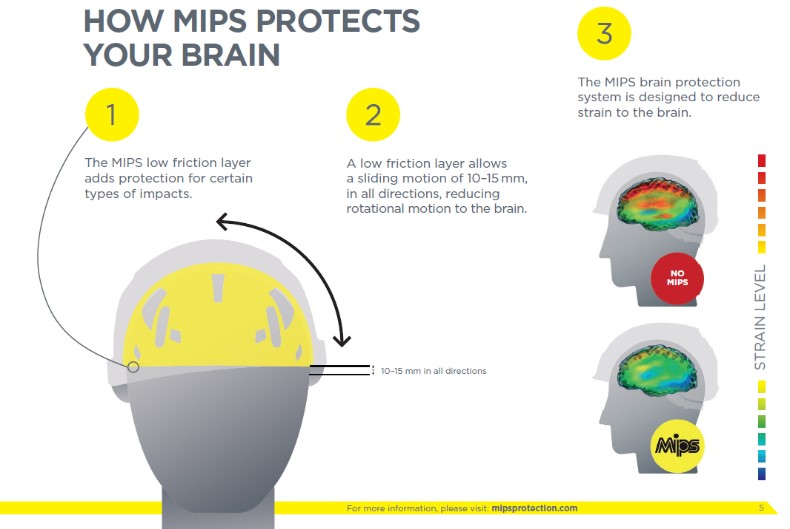
Swedish brain protection company MIPS is partnering with Construction Manager to launch its brain protection system for hard hats in the UK.
MIPS is a brain protection system that helmet manufacturers incorporate into their hard hats to reduce rotational motion caused by an oblique impact from a fall or getting hit by a falling object.
The rotational motion caused by an angled impact can cause strain to the brain tissue, which may lead to severe brain injuries and is the most likely cause of concussion.
MIPS reduces that motion by adding protection to absorb and redirect forces that could otherwise be transmitted to the brain.
Over the coming months MIPS will work with some of the leading above-the-neck PPE manufacturers to bring MIPS’ brain protection system into hard hats sold in the UK.
The Swedish company wants to improve the head protection of workers, reduce Accident Frequency Rates and make construction sites safer.
Concussion risks in construction
Construction workers are at risk for severe head injuries and concussion.
In the majority of cases, our head is likely to hit the ground at an angle when we fall, slip or trip, as well as when we are knocked on the head by falling tools or debris. Conventional hard hats protect against injuries such as skull fractures, but do not reduce rotational motion enough.
The MIPS System has the potential to revolutionise personal safety in this sector by offering a safer head protection to all workers who take a high risk because of their occupation. The listed company, which was founded by a neurosurgeon and a scientist, sees great potential for bringing added protection to hard hats.

Thanks to the yellow MIPS layer, the head can slide 10-15mm in any direction in the helmet. This can reduce rotational motion that may affect the brain.
Max Strandwitz, MIPS CEO said: “We plan to engage with the UK’s most high-profile construction health & safety leaders.
“We know that construction workers are particularly at risk for accidents, especially head injuries. MIPS has the potential to revolutionise personal safety in this sector and offer additional head protection to workers on as many work sites as possible. In our free time, for example when cycling, riding or skiing, we place an enormous amount of importance on safe head protection.
“For people who take a high risk because of their occupation, the best possible helmet at work should also be a priority. Protection against rotational motion should be as important for safety helmets as airbags and seatbelts are in cars.”
Despite the widespread and mostly mandatory use of hard hats, construction workers are still at risk for severe head injuries including concussion. They can suffer concussions from the impact force from a fall, slip or trip as well as a result of being knocked in the head by falling tools or debris or impact with heavy machinery. When head injuries occur as the result of an accident on site, the consequences can be life changing and devastating.
The partnership will allow MIPS to reach the membership of the Chartered Institute of Building (CIOB), the largest body of construction professionals in the UK.
Safety experts roundtable
Strandwitz continued: “We have partnered with Construction Manager, the highest circulation construction-based publication channel serving the UK built environment.
“We look forward to hosting a high-profile Roundtable event with Construction Manager in Autumn 2020 where selected industry experts from some of the UK’s most successful contractors who influence thought around health and safety will all come together. The agenda will focus on accident statistics, head/brain injuries, the effectiveness of standard hard hat technology and how it can be improved.”
Will Mann, editor, Construction Manager said: “Health and safety remains a massive issue for construction, with a high number of fatal and nonfatal brain injuries. The MIPS Brain Protection System can help the industry reduce the number of these often life-changing injuries.
“Construction Manager looks forward to discussing the helmet technology and related safety issues at our round table event with MIPS and leading construction health and safety figures.”










